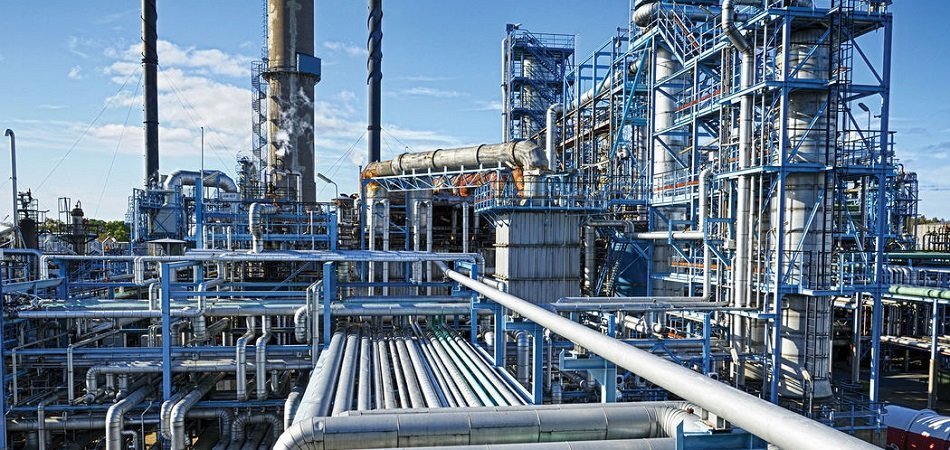According to McKinsey, global gas demand is expected to reach 4,503 billion cubic meters (bcm) in 2035, showing a more than 1% annual growth from 3,736 bcm in 2017. Asia is expected to be the biggest consumer of the resource at 47%, followed by the rest of the world (24%), the Middle East (16%), and the United States (14%).
AI and the internet of things (IoT) have found their way into the oil and gas world. As of now, numerous companies claim to assist plant managers, machine operators, and field personnel predict when machines need maintenance and upkeep, keep employees safe in the work environment, and improve production.
IoT is the technology that allows devices, machinery, and other equipment to communicate with each other. It enables oil and gas companies to manage and store data, create applications, and set security protocols using data science methodologies.
In this article, we list four software solution companies that claim to offer oil and gas companies IoT solutions that leverage artificial intelligence for so-called predictive maintenance: using AI to know when to repair machine parts before they break entirely.
Interested readers will likely want to read our article on predictive analytics in oil and gas, as predictive (and prescriptive) analytics makes IoT-enabled predictive maintenance possible for oil and gas companies. For the sake of understanding this article, prescriptive analytics is simply predictive analytics with the extra step of recommending an action to a user.
For oil and gas companies, prescriptive analytics software might tell a user that they should repair a particular piece of machinery because it is likely to break in the coming week.
Predictive Maintenance: AI for Repairing Oil and Gas Plant Machinery
IoT-enabled artificial intelligence solutions for the oil and gas industry almost always offer oil and gas companies the ability to know when its machines, pipes, and tanks are working improperly or soon due for maintenance. This allows them to fix the machines before they break, which could save millions in repair costs, regulatory fees and fines, and restitution to any workers injured during a malfunction.
In this section, we’ll discuss three vendor companies that claim to offer more traditional predictive maintenance solutions before discussing one later in the article that claims to offer predictive maintenance via edge computing.
We start our analysis with Spark Cognition, which we believe is the company most likely leveraging artificial intelligence in its solution:
SparkCognition
SparkCognition is a Texas-based company that offers a suite of applications which it claims can help oil and gas businesses organize, extract, classify, analyze, and process data to conduct maintenance on machinery and other equipment.
SparkCognition explains that its suite of applications consists of:
- DeepNLP, which extracts and organizes data from various enterprise sources to enable analytics
- SparkPredict, which analyzes sensor data using machine learning algorithms to recognize impending machinery failures
- Darwin, which trains the algorithms and builds the algorithmic models
- DeepArmor, which was trained to recognize malware to protect and secure client systems
The modules work together to predict deviations in the optimal performances of machinery. For instance, unstructured data from a variety of sources are first collected by DeepNLP. The application classifies the data based on its attributes, allowing SparkPredict’s machine learning capabilities to filter and compare the new data with those in the database. If the algorithms detect sub-optimal performance in the machinery, the application alerts the plant operators before machine failure occurs.
We can infer that oil and gas experts at the client company would need to determine where to install sensors on the glycol system and export compressors. These sensors would then collect telemetric data from those parts of the glycol system and export compressors, such as pressure, vibration, and temperature.
This data would then be used as a baseline for a properly functioning glycol system and export compressors.
The machine learning model behind the software would need to be trained on millions of these telemetric data points and data about when certain parts of the glycol system and export compressors required maintenance, how long maintenance on those parts took, and possibly how long replacement parts took to arrive on site.
The data would then be run through the software’s machine learning algorithm. This would train the algorithm to discern which of all these data points correlate to properly functioning glycol system and export compressors parts, the time at which the glycol system and export compressors have needed maintenance in the past, and which of its parts needed repair.
The software would then be able to predict when certain parts of their glycol system and export compressors are due for maintenance before they break down.
The Darwin module features seem to enable the data scientists to build the algorithmic models. The company claims that this module cleans data then identifies the attributes that would best build the model’s architecture. SparkCognition states that Darwin also shows how the results were achieved. Data scientists could add more datasets to improve accuracy, the company reports.
Below is a short 3-minute video demonstrating how SparkPredict works:
SparkCognition claims to have helped an unnamed oil exploration and production (E&P) company create an algorithmic model for predictive maintenance, avoid costly emergency repairs, improve operational safety, and maximize production in all 17 of its oil wells.
According to the case study, the E&P company turned to SparkCognition to create models that could predict well maintenance and production. Using Darwin, SparkCognition’s data scientists used the oil well’s location and reservoir attributes such as monthly oil, water and gas production datasets to train the algorithmics. In all, the models referenced 40 attributes to recognize seven maintenance event types related to the oil wells.
The case study reports that the system helped engineers predict potentially invasive workovers, rod changes, and cleaning operations in 12 wells with 70% to 80% accuracy, reducing operating costs.
The models could also predict maintenance requirements three and six months before they are needed, helping improve operations and worker safety, reducing costly emergency repairs, and allowing engineers to focus on more productive wells to maximize returns.
The case study reports that SparkCognition created the algorithmic models in days and used only one month’s worth of data to achieve the accuracy level at that time. Readers, however, should take this case study with a grain of salt because the client was unnamed.
SparkCognition lists Apergy, MHPS Americas, and the British Army as some of its past clients.
Bruce Porter is the Chief Science Officer at SparkCognition. He holds a PhD in Computer Science from the University of California at Irvine. Porter continues to serve as Professor of Computer Science at the University of Texas, Austin where he was chairman of the department from 2009 to 2017.
Softweb Solutions
Softweb Solutions is a Texas-based company that offers IoT Connect , which it claims can help oil and gas businesses maintain or improve equipment performance and worker safety using what appears to be prescriptive analytics.
Softweb Solutions claims part of the IoT Connect system is the Softweb Intelligence and Analytics (SIA) platform. As sensors attached to pumps, valves, and other machine gauges collect data, the company explains that this data is sent to the cloud where it is stored and analyzed by the SIA machine learning algorithms.
The algorithms would have already been trained on data that indicates the normal functioning of the pumps, valves, or gauges; as such, they would be able to alert personnel when these machine parts were in some way malfunctioning, recommending them that they repair the parts.
Below is a short 3-minute video demonstrating how IoT Connect works:
Softweb Solutions claims to have helped industrial company Ingersoll Rand detect impending machine failures and avoid downtime at its client’s production sites. Ingersoll Rand needed to maintain the high efficiency of the compressors sold to clients to minimize unplanned downtime in the production process. They needed a solution to remotely monitor and conduct predictive analyses on the compressors.
The case study reported that the sensors sent operational data to IoT Connect, where it was analyzed to better understand how the equipment functioned. The compressors continuously reported the status of oil temperature, oil pressure, stage 1 temperature, motor current, system pressure, and other metrics over a secure internet connection. These sensors alerted the technicians about the status of the machinery. If an operating parameter indicated abnormal behavior, the maintenance personnel were alerted via email.
This enabled the Ingersoll Rand’s technicians to remotely determine the specific component that was underperforming and bring that component to the customer site.
Softweb Solutions also lists Bosch, Firestone, ABB, Fujifilm, Pepsi, Qualcomm, Siemens, GE as some of its past clients.
We could not find evidence of any C-level executives on the team with robust AI backgrounds, but the company reports earning $4.4M in revenue annually. Ripal Vyas is the founder and CEO at Softweb Solutions. He holds an MS in Computer Science from the Illinois Institute of Technology.
Telit
Telit is an Italian company that offers an IoT solution it claims can help oil and gas companies improve productivity, safety, and conduct preventive maintenance using natural language processing (NLP).
Telit claims the solution includes the deviceWise application, which enables the analysis of data from drilling equipment, pipelines, trucks, trains, boats, and oil tanks equipped with sensors.
The company claims that deviceWISE collects a variety of data from computers and sensors that monitor and control machinery in plants environments. It then seems to work similarly to the other predictive maintenance and telemetry software listed in this report.
The company states that the resulting data analytics can be displayed on smartphones, desktop computers, and tablets, while alerts are received as emails, RSS feed, or a calendar event. This enables the business to make changes in the process to improve production, as well as conduct preventive maintenance on machines to ensure the safety of workers.
Below is a short 2-minute video demonstrating how Telit software works:
Telit claims to have helped Intelligent Sensing Anywhere (ISA) deploy sensors in consumer LPG tanks and collect information about how the end-user homes use energy sources.
ISA specializes in LPG Bulk Tank Monitoring. ISA integrated Telit’s CE910-DUAL and GE910-QUAD V3 modules that provide connectivity for mobile and fixed applications such as vending, point-of-sale, tracking, smart metering, and telematics devices.
Working with ISA C-Log to remotely monitor equipment for fuel and gas tanks, the system now collects data such as level reading in gas and other fuel tanks and alarm transmission, enabling ISA to generate a larger stream of data. No other details were provided in this case study.
Telit also lists Acclaim Energy, Aquarius Spectrum, Automile AB, Axentia, BigBelly Solar, Bluewind, Corintech, MC Machinery Systems, Touchcom and Telic as some of its past clients. The company has raised $25.5 million in funding from Voila Credit, Fortissimo Capital, 360 Capital, and 83North.
That all said, we were unable to find any C-level executives with AI experience on the company’s team, and so it is less likely that the company is actually leveraging machine learning than if they employed several data scientists with PhDs, which is our standard when vetting companies on their likelihood of leveraging AI.
IoT-Enabled Edge Computing for Predictive Maintenance
Foghorn
Foghorn is a company that offers software called Lightning Edge Intelligence, which may help oil and gas businesses conduct maintenance that reduces machine failures and downtime, reduces costs, and potentially increases ROI and customer satisfaction using machine learning.
Most edge solutions collect data using sensors and send this data to the cloud for offline analysis. However, many industrial environments and devices lack or have poor connectivity.
Sometimes, poor connectivity on-site makes it difficult send the large amount of sensor data to the cloud, causing delays. By the time data reaches and is processed with other data in the cloud, it may be too late to take any action.
FogHorn claims that its Lighting Edge Intelligence solution provides a machine learning-driven analytics engine with a footprint of less than 256MB that already analyzes the data at the edge before it would traditionally be sent to central cloud storage.
It is unclear if Lightning Edge Intelligence is an anomaly detection or prescriptive analytics software, although it seems to alert personnel at the client company when it detects that machine parts are working improperly, as is standard for predictive maintenance software.
We might infer that the software is based on prescriptive analytics because the algorithm would need to be trained on data that indicates a regularly functioning machine part before a client company deploys it.
An anomaly detection software would need to run for several weeks to months before it would be able to start predicting machine part failures, and this more likely would require access to the cloud for client company subject-matter experts and data scientists to provide feedback to the algorithm when necessary.
Since Foghorn seems to tout their company’s ability to work on the edge, it seems likely that their software runs on a prescriptive analytics algorithm.
For instance, the company explains that the application can monitor the operational data from an electric submersible pump. If a potential failure is detected, the system could automatically stop the pump to prevent damage and notify operations to repair or replace the ESP based on current machine health and maintenance models.
Another use case is pipeline optimization, where the solution could shut down a valve and send an alert to a mobile device to avoid a major disruption or damage to a pipeline.
Foghorn does not feature case studies in its website but claims in a press release that it helped Daihen Corporation identify production errors, improve collaboration and data accuracy, and eliminate 5,000 hours of manual data entry per year.
Daihen needed a faster way to analyze data from dozens of sensors that measured material condition from the previous manual process. The company turned to Foghorn to deploy radio frequency identification (RFID) infrastructure to track manufacturing and team efficiency, and sensors to monitor the condition of its Osaka factory.
The press release claims that Edge ML automated the monitoring of Daihen’s electric transformers manufacturing process. Sensors collected data on the temperature, humidity and dust levels via RFID to generate analytics related to the assembly of each part of the transformers, and tracked how long each stage took to complete.
Using the collected data and the resulting analysis, Daihan was purportedly able to improved parts of the manufacturing process.
Foghorn added that within six months, the phased deployment of the tracking system covered 70% of the Daihen factory, and is expected to track all of the processes within the year.
We were unable to find any mention of enterprise-level clients on Foghorn’s website nor in any of their press releases, but it has raised $47.5 million in funding and is backed by Intel Capital, General Electric, and Saudi Aramco Energy Ventures.
Sastry Malladi is the CTO at Foghorn. He holds an MS in Control Systems from the Indian Institute of Technology, Kharagpur. Previously, Malladi served as Chief Architect at Stubhub, an eBay company, and as Distinguished Architect at eBay.
Header Image Credit: Rimkus


















